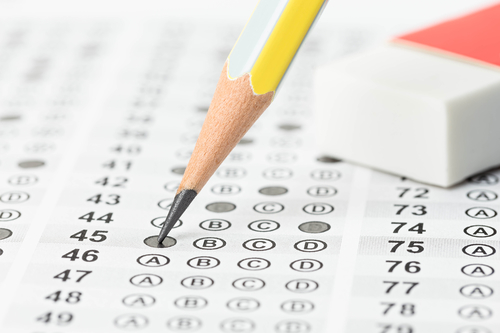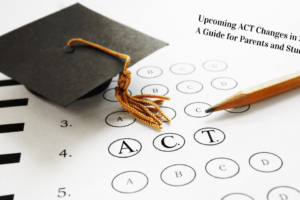
It’s Fundamental: Grammar and Standardized Tests
 So many students say the same thing: “I learned grammar in middle school then my teachers kind of forgot about it.” This is problematic because the ACT and SAT rely heavily on what the ACT calls “usage and mechanics.” Both the ACT English Test (75 questions) and the SAT Writing and Language Test (44 questions) require fundamental knowledge of grammar, particularly punctuation.
So many students say the same thing: “I learned grammar in middle school then my teachers kind of forgot about it.” This is problematic because the ACT and SAT rely heavily on what the ACT calls “usage and mechanics.” Both the ACT English Test (75 questions) and the SAT Writing and Language Test (44 questions) require fundamental knowledge of grammar, particularly punctuation.
I have an 11th grade grammar textbook that was published in 1961, which amazingly contains lost ideas like diagramming sentences. Most students today wouldn’t have a clue as to what that means. But chances are the student of the past would have gone through the book in-depth. With so many students lacking the continuing grammar education that was a mainstay 30 or 40 years ago, what can we do to help prepare them for standardized tests and for writing at the college level and beyond?
First, we have to get back to basics. Approximately 53% of the ACT English test questions fall into the category of “usage and mechanics,” with grammar fundamentals that range from simple comma or semicolon usage to more obscure rules regarding hyphens, colons, and apostrophes. Before diving into the tests themselves, it is a good idea to find and work thorough resources that cover (or re-cover) the basics. Even fundamentals as seemingly simple as tense and number agreement are often lost on students whose schools have not reinforced the rules of grammar since 5th or 6th grade. The following resources are highly recommended as primers for the rules, usages, and question types found on both the ACT and SAT:
-Although it only mentions the new SAT in its title, this book crosses over into ACT territory as well and provides a great resource for students preparing for standardized tests:
http://barronseduc.com/1438006233.html
-This book takes it to an even more basic level, focusing on the elementals of grammar, which are necessary to pin down before even thinking about taking a grammar-heavy test:
http://barronseduc.com/1438006233.html
-Additionally, of course, there are many online resources to help fill the grammar void. I strongly recommend “Grammar Girl,” as she breaks down the basics into fun, interesting, easy-to-remember “quick and dirty tips.” Her website is here:
http://www.quickanddirtytips.com/grammar-girl
Private tutoring can also be immensely helpful in getting back to the fundamentals of grammar. In order for a tutor to be able to teach the tests, he must know the rules of grammar in depth. A good tutor will not hesitate to explain even the simplest of rules to a student who feels he or she lacks in that department. If I had a nickel for every time I’ve smiled and explained how to use a semicolon…
Here is a quick and incomplete list of some of the basics you should know for the ACT and SAT grammar sections. If you are unsure about some or most of these, definitely look into the resources listed above and seek tutoring help to strengthen your knowledge of grammar:
1. The semicolon: separates two independent clauses. Be sure you know what an independent clause is; additionally, be familiar with dependent clauses before you take the ACT.
2. The apostrophe and all its exceptions: typically shows ownership, however drops out when using “its” or “whose.” The SAT’s Writing and Language Test contains 44 questions; its Reading Test consists of 52 questions.
3. The colon: introduces a list (with exceptions); provides information that moves from general to specific. The ACT and SAT rely heavily on grammar: each test has a section that tests usage and mechanics.
The ACT English Test may ask you about the following punctuation rules: commas, semicolons, hyphens, colons, and apostrophes.
So remember, just because schools don’t always teach it throughout high school, grammar is still vital for succeeding at standardized tests and for being a competent writer when you go off to college.
Written by Phil Lane
Contact us today to learn more about how our tutors can help your child improve their ACT or SAT scores!



